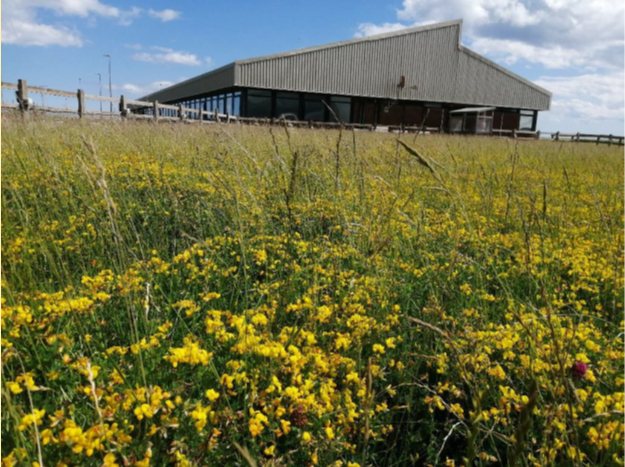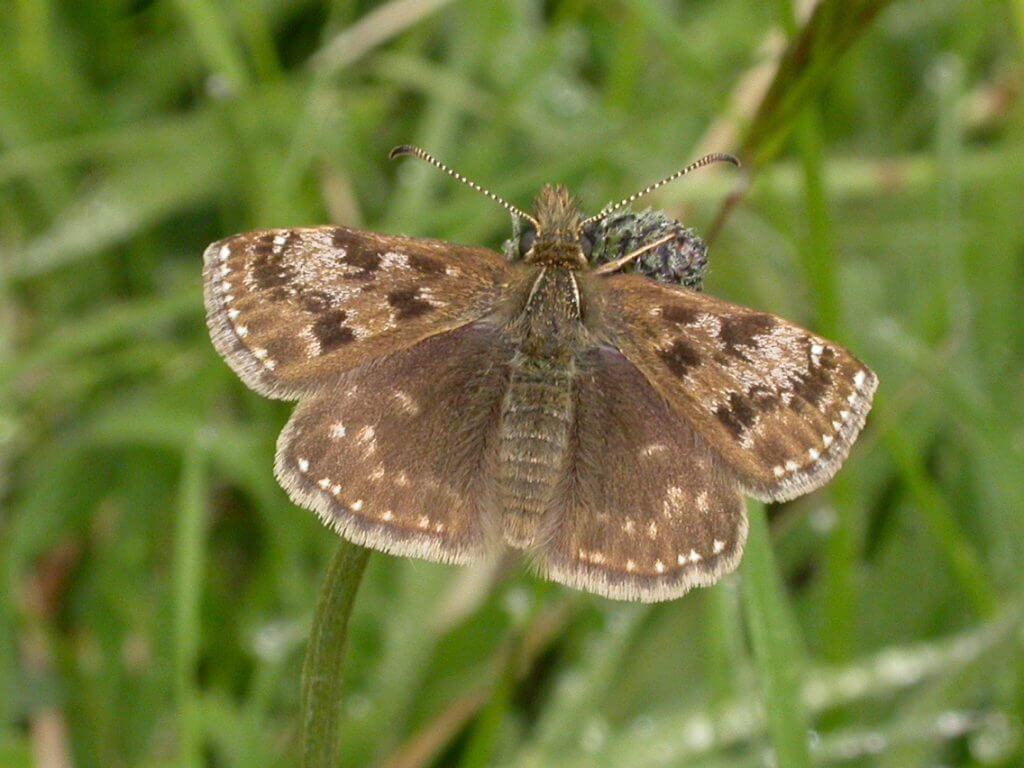Biodiversity @ ICL Boulby
For over a decade ICL Boulby has worked with the Industry Nature Conservation Association (INCA) in monitoring and managing the wildlife which lives in close proximity to the mine. Key to this process is the Site Biodiversity Action Plan (Site BAP) operated by ICL Boulby within its operational area. The site BAP is designed to conserve the key habitats and species which live at the site, and is assisted by INCA annually.
In 2019, as part of the ecological survey work by INCA, the key elements were bat hibernation roost check, invertebrate survey and a mammal survey.
Bats
The annual bat hibernation roost survey of the disused mineral line tunnel in Mines Wood was carried out on 7th February 2019 in mild, benign, weather with an external temperature of 7°C. It was very encouraging to note that single Brown Long-eared Bats Plecotus auritus were observed roosting in two of the wall-mounted bat boxes, bat box 13 (outer slot) and box 17 (third from outer slot). Box 13 was also occupied by three Brown Long-eared bats in a visit during the previous late summer on 17th September.
The regular occupancy of these boxes is very pleasing because there are theoretically a number of potential winter-roosting opportunities for bats in this tunnel and yet some bats choose the boxes in preference to their more traditional man-made roost sites, proving that they were suitably made and located. Interestingly the winter observations of bat usage of the boxes are of Brown Long-eared bat and not of the other species which are known to use the tunnel during winter. Brown Long-eared Bat appears to be able to take advantage of milder periods during winter, when they come in and out of hibernation to feed upon the many insects that use the tunnel during winter. This is evidenced by feeding signs of Herald moth wings near obvious feeding perches in the culverts within the tunnel (this is a species that is only present in the tunnel in the winter, where the adults congregate to hibernate). In this subterranean location, both the bats’ prey and the mechanism (the perch) used to eat the prey are reminiscent of Brown Long-eared Bat in our region.
Mammal Survey
Although bats are an important mammalian feature of the Mines Wood area, there remains potential for a range of other mammal species to be present. To this end INCA installed three tree-mounted camera traps at intervals in suitable locations along the course of Easington Beck in Mines Wood between 18-25 February 2019 and 27 June- 2 July 2019. The weather was excellent during both periods. This location is where evidence of Otter have been discovered, with prints of an older animal and a youngster having been previously found in stream-side mud, so expectations were high.
The cameras recorded images of Fox Vulpes vulpes, Roe Deer Capreolus capreolus and Wood mouse Apodemus sylvaticus
On the first occasion, the cameras recorded images of Fox Vulpes vulpes, Roe Deer Capreolus capreolus and Wood mouse Apodemus sylvaticus. Reasonably fresh footprints along the margins of the Beck indicated that there had also been Hedgehog Erinaceus europaeus and Mink Neovison using the woods. These were the first records of these species having been noted on the site and the former record is particularly significant, as Hedgehog is in national decline.
Invertebrates
A visit to the office area wildflower meadows in early June showed them to be in fine condition floristically.
Offices meadow in June 2019

There were good numbers of Common Blue Polyommatus icarus present in the meadows on the day of the visit. Excitingly, 2019 is the first year that Dingy Skipper butterfly Erynnis tages has been seen in the meadow, a species which uses the same larval food plant. Dingy Skipper is particularly significant as it is a national conservation priority species and one which is in decline nationally.

Marine Monitoring
Historical discharge of insoluble mining waste (mine tailings) from the ICL (UK) Boulby mine (formerly Cleveland Potash) led to the localized accumulation of some insoluble material in the sediments of the Boulby sand patch. Ecological surveys have been performed annually by ICL (UK) in order to assess the extent of accumulation of this material and to monitor its environmental impact, including the impact of any compensatory dredging activity. Annual ecological monitoring surveys have been conducted since 1970 enabling comparison of historical data and the determination of long-term trends. Annual monitoring results are reviewed by the Boulby Mine Working Group (BMWG) comprising representatives from ICL, Ramboll, survey team, local authorities and the Environment Agency.
The overall ecological impact at Boulby is substantially less than in 1990.
The 2019 Benthic survey showed a reduction in overall species diversity compared to 2018. However, this species reduction was found not only at the tailings outfall, but also the local reference stations, indicating that wider environmental factors may be influencing these changes.
The Boulby mine working group categorizes sample stations as impacted, intermediate (A) and (B) and sparse, offshore background. This rating system showed an overall lower impact based on their criteria in 2019. In terms of severity, the overall ecological impact at Boulby is substantially less than in 1990.
The Boulby Mine discharge continues to influence the sediment physico-chemical composition at stations within the Boulby sand patch, which is reflected in the benthic macrofauna communities. However, compared with 2017 a decrease in the silt-clay fraction was recorded, determining a change in the benthic fauna composition towards species found in coarser sediments. The influence is mainly from sediment physico-chemical parameters, such as particle size rather than direct toxicity, since metal contaminant concentrations in sediment are generally below TEL threshold values indicative of no or low biological effect.
As production has shifted from potash to polyhalite, there is now less discharge into the North Sea.
The quantity discharged in 2018-9, is almost halved compared with 2017. As production in ICL Boulby has now completely shifted from potash to polyhalite, there will be less discharge into the North Sea.


